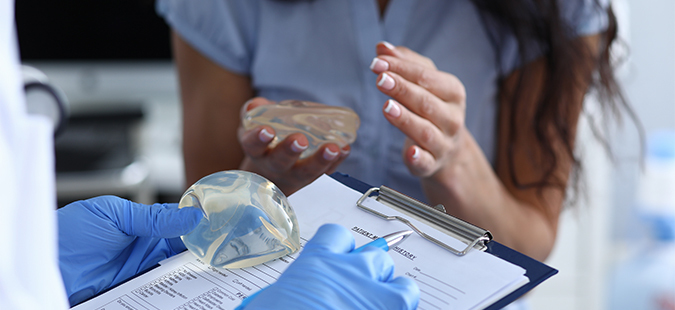
What You Need to Do If Allergan’s BIOCELL® Implants Are Causing Adverse Effects
Last week, we wrote about Allergan plc’s BIOCELL® textured breast implants and tissue expanders, briefly detailing the history of the product lines’ recall because of the discovery of adverse side effects in recipients. General burning, pain, and swelling around the area of implantation are just a few among a long list of negative side effects associated with Allergan’s BIOCELL® products.
But it turned out that these were not simply symptoms of receiving the breast implants. Instead, they were symptoms of a rare type of lymphoma (blood cancer).
Allergan’s BIOCELL® textured breast implants and tissue expanders have been linked to causing breast-implant associated anaplastic large-cell lymphoma (BIA-ALCL).
As mentioned last week, BIA-ALCL is not a breast cancer. It is a lymphoma. As such, it does not develop within the breast or mammary. BIA-ALCL develops within the scar tissue of the incision site where the implant or tissue expander was placed.
Data show that symptoms of BIA-ALCL can arise any time after receiving an Allergan BIOCELL® implant. That said, the general range of time seems to be 2 to 28 years.
Symptoms of BIA-ALCL may include the onset of the following:
- Asymmetry of the breasts
- Breast pain or swelling
- Burning sensation in breasts
- Capsular contracture
- Chronic fatigue
- Constant fevers
- Itching around site of implantation
- Lump/s in the armpit or breast
- Rash near site of implantation
- Redness around site of implantation
- Weight loss
If you or a loved one has received Allergan’s BIOCELL® textured implants or tissue expanders and are experiencing any of the aforementioned symptoms, please contact a doctor immediately. The symptoms may be a sign of breast-implant associated anaplastic large-cell lymphoma. If that is the case, time is of the essence.
Being a blood cancer, lymphoma can migrate throughout the body, causing more harm the longer it is left undetected and untreated and could ultimately result in death.
Typically, after consulting one’s doctor regarding the possibility of BIA-ALCL, a patient will undergo a series of diagnostic tests. In order, these preliminary tests include an ultrasound, then a needle biopsy if necessary, and finally an MRI.
An ultrasound of the breast will detect the presence of seromas, which are pockets of fluid that can accumulate under the skin near the site of a surgical incision.
If multiple seromas are detected, the doctor is likely to send the patient for a needle biopsy, which will drain the fluid. The fluid will be tested for indicators of cancerous cells.
Finally, an MRI (magnetic resonance imaging) is used to capture images of the patient’s soft breast tissue to check for damage caused by the implant or cancer.
And in case you were wondering, mammograms and X-rays are ineffective at detecting BIA-ALCL, so doctors will not order these tests.
The sooner BIA-ALCL is detected, the better the chances of recovery and survival.
If you or a loved one is a recipient of Allergan’s BIOCELL® textured breast implants or tissue expanders and have experienced any of the above-mentioned symptoms associated with BIA-ALCL, or if you have been diagnosed with BIA-ALCL, or if you have already had surgery to remove your Allergan implants, call The Yost Legal Group today at 1-800-YOST-LAW. There is no time to wait.